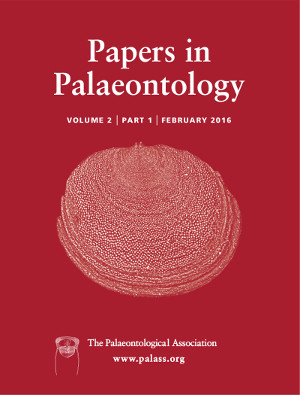Reg. Charity No. 1168330

Phoebichnus trochoides is a large, radiating trace fossil most commonly found in shallow marine siliciclastic deposits. The structure consists of a central boss from which extend numerous, lined, radiating burrows which have an active fill. Serial grinding and modelling techniques allow the full three‐dimensional morphology of Phoebichnus trochoides to be constructed for the first time. Three‐dimensional models of the trace fossil demonstrate that the central zone is composed of stacked disc‐shaped layers. The structure is inferred to result from collapse of sediment below a surficial cone created by the trace‐maker from excavated sediment produced during burrowing. The fill of the radial burrows is herein determined to be composed of angle of repose laminae that are inclined towards the central zone rather than the meniscate backfill documented in the ichnogeneric diagnosis and all subsequent descriptions. The structure of the fill resulted from the trace‐making organism filling its burrows from a dwelling position close to the central boss, probably with material excavated from other parts of the burrow system. This study also reports for the first time subtle conical structures above the radial galleries that are inferred to result from collapse cone feeding. The new fully three‐dimensional data set created of the burrow and the near‐burrow environment allows for a new palaeobiological understanding of the burrow, which suggests that a crustacean trace‐maker is most likely.